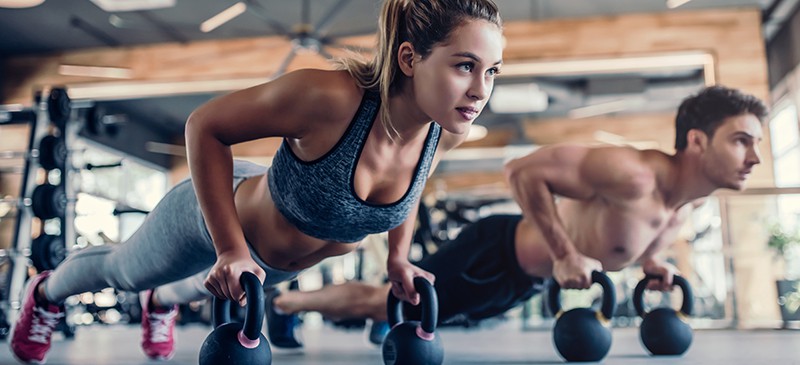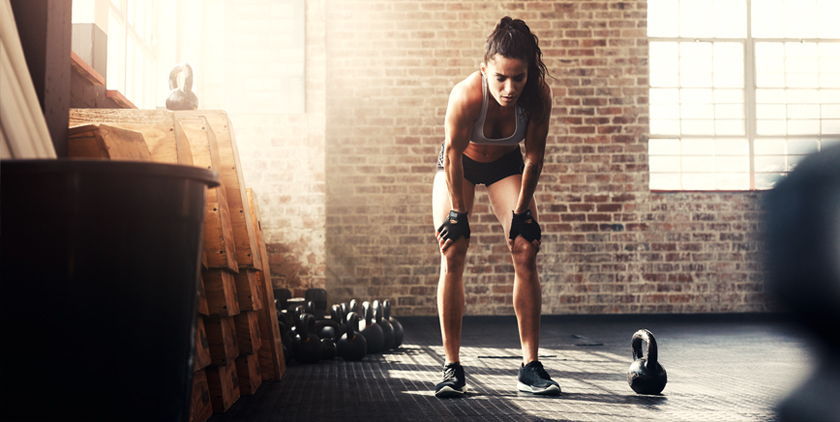Dumbbells are about to become your new best friends. When you want to torch calories and burn fat, do you make a beeline for the cardio machines? Surprise: You might want to head over to the barbell instead. Here’s the deal on how many calories you burn lifting weights—and afterward.

The Benefits of Lifting Weights
Before we even talk about calories, you should know that strength training offers a number of short- and long-term benefits for your overall health, body, and mind. A few noteworthy perks: stronger and denser bones, increased muscle mass and strength, boosted metabolism, decreased body fat, increased joint stability, improved endurance and cardiovascular health, better functional strength (think: carrying groceries), and more confidence. Yeah, that’s a lot. But when many people take up weightlifting, they have a few specific goals in mind: to burn calories, build muscle, and boost their metabolism. (Ahem…15 Transformations That’ll Inspire You to Start Lifting Weights)
Does Lifting Weights Burn Fat?
You probably already know it builds muscle. But there’s more good news: If your goal is to shed body fat and your current cardio-heavy workout just isn’t cutting it, strength training can be a total game-changer. Weightlifting stimulates muscle growth and increases muscle size. As you build more muscle, your metabolism (or energy expenditure) increases because muscle burns more calories at rest than fat. The result: You burn more calories on a daily basis—making it easier to lose body fat.

Plus, because weightlifting is higher in intensity and demands so much energy, your body requires extra oxygen to recover in the hours after your workout. And guess what using all of this extra oxygen does? Burns calories. In fact, this after-burn effect can last 24-plus hours. When combined with a healthy diet, the metabolic boost from weightlifting can help you get (and stay!) lean. In fact, research has long shown that weight training can help both men and women improve their body composition (a.k.a. how much muscle versus fat they have).
So, How Many Calories Do You Burn Lifting Weights?
How many calories you burn lifting weights depends on how hard your body is working, which scientists measure in METs, or metabolic equivalents. At rest (like when you’re watching Netflix), your body is working at 1 MET, the equivalent of burning 1 calorie per kilogram of body weight per hour. (For a 150-pound person, that’s about 68 calories burned lifting weights per hour.) When lifting weights, your body works at anywhere from 3 METs (if you’re putting in light effort) to 6 METs (if you’re really working your butt off). For a 150-pound person, that’s anywhere between 200 and 400 calories per hour. (Good news: You can gauge your number of calories burned by plugging in your weight, estimated effort level in METs, and exercise time into this online calculator.)

A number of factors—including how much you weigh and how much muscle you have—all influence how many calories you burn lifting weights. In fact, one person may burn more than 100 calories more or less than someone else during a 30-minute weights sesh. One way to gauge your calorie burn during a strength-training workout is to wear a fitness tracker that monitors your heart rate. Most trackers use your heart rate, height, weight, and age to estimate your burn.
Workout Factors That Affect How Many Calories You Burn Lifting Weights
Your weight and body composition aside, a number of variables in your actual workout can affect how many calories you burn lifting weights.
1. Rest Intervals
No surprise here, but how long you spend sitting on a bench scrolling through Instagram between sets impacts your total calories burned lifting weights. The body burns more calories with short rest periods or no rest at all. Why? The minimal downtime means your body needs to work harder for you to continue working out. It also needs to work harder to recover and replenish after your workout, burning calories all the while. In fact, not tracking rest intervals—or simply resting for too long between sets—is one of the biggest mistakes gym-goers make when looking to increase their calorie burn.

2. How Heavy You Lift
Like how much you rest (or don’t rest), how heavy you lift also determines the overall intensity of your workout, which affects how many calories you burn lifting weights. After all, the harder you work, the more energy your body churns through. Moderate weights are most often used to ramp up calorie burn. But lifting heavy weights for few reps requires a lot of power and energy, and also yields a high calorie burn. Focus on sets of about 10 reps or less, using the heaviest weight you can while maintaining proper form.
3. Which Muscles You Use
Think doing biceps curls burns as many calories as doing squats? Not so much. The more muscle recruited and more muscle groups used in a lifting session, the more calories you burn lifting weights. Exercises that use your larger muscles (think: your back and legs) and compound exercises that engage multiple muscle groups (like deadlifts or squat-to-presses) require more energy to perform and thus burn more calories. (P.S. You should also do compound exercises before doing more targeted exercises.)
4. The Type of Workout You’re Doing
Though many boot camp or HIIT-style workout classes incorporate weights, your body reacts to them differently than a straight-up weightlifting workout. A boot camp workout that incorporates cardio keeps your heart rate elevated, which increases your overall calorie burn. Working at this faster pace and higher-intensity—even if you’re using lighter weights than you would in a cardio-free session—ensures your body continues burning calories post-workout in order to recover. (That’s just one of the many benefits of HIIT workouts.)

Just note that since these types of classes typically use lighter weights, they don’t help you build strength or muscle mass as quickly, says Sulik. So while these workouts definitely help you burn all the calories in the short-term, they don’t do as much to increase your body’s daily calorie-burning baseline (via increased muscle mass) as much as true strength-training workouts.
How to Burn More Calories Lifting Weights
With all of these factors in mind, you can easily tweak your next weightlifting sesh to burn more calories, if that’s your workout goal.
A few suggestions:
Use weight heavy enough that you can only perform 10 or fewer quality reps of an exercise at a time. Focus your workouts on compound or total-body exercises, like deadlifts or pull-ups Incorporate supersets, in which you perform two different moves back-to-back before resting Swap machine moves for standing exercises (balanced moves require you to activate your core and lots of other muscles throughout your body!)
www.sahpe.com
